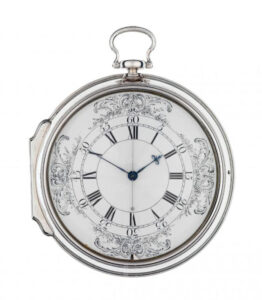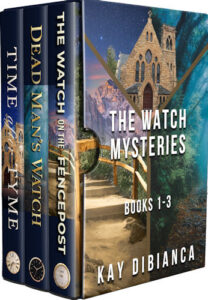
“at sea” – an idiom meaning “confused” or “lost”
* * *
I recently read a book entitled Longitude by Dava Sobel. It’s the story of an invention that first made it possible for sailors to pinpoint their location at sea. According to Sobel,
“Lines of latitude and longitude began crisscrossing our worldview in ancient times, at least three centuries before the birth of Christ. By A.D. 150, the cartographer and astronomer Ptolemy had plotted them on the twenty-seven maps of his first world atlas.”
Knowing one’s position on the face of the earth is just a matter of knowing the latitude and longitude. . (You’ll remember latitude are the horizontal lines around the earth, all parallel to the equator. Longitudinal lines (meridians) are lines drawn from the North Pole to the South Pole.)
During the Age of Exploration, roughly from the 15th to the 18th centuries, one of the major seafaring problems was the inability to establish the ship’s position on the high seas. Latitude was fairly simple to determine by the height of the sun as it progressed across the sky or by the position of certain stars, but there’s no similar way to determine longitude. Once a ship sailed out of the sight of land, it had no reference point for which to understand its east/west position.
Since longitude is a measure of time, not distance, an easy way to determine it is to compare the time of day on board ship with the time at the home port from which the ship sailed. This can be accomplished by setting a clock to the home port time before sailing and keeping that clock on the ship. The actual time aboard the ship is determined by the position of the sun and compared to the clock. Each hour of difference corresponds to fifteen degrees of longitude. Sounds easy, right? Unfortunately, there were no clocks in existence during the early days of the great explorers that would keep accurate time on board a ship. The movement of the ship and the changes in temperature, pressure, and humidity affected the clocks’ mechanisms, and the results were unreliable.
Some of the best minds of that era, including the great Sir Isaac Newton, had tried to find an astronomical solution to the problem, but the quest seemed out of reach. (Pun intended.)
It was such a big problem that in 1714 the British Parliament passed the Longitude Act which offered a lucrative prize for the first person who could deliver a practical means of determining longitude at sea.
Into this environment stepped John Harrison, a carpenter and self-taught clock maker, whose skill and determination were just the attributes needed. Harrison solved problem after problem in his dogged persistence, and finally in 1736, his first clock, unimaginatively named the H-1, sailed aboard the HMS Centurion to Lisbon and returned aboard the HMS Orford. The clock performed admirably, and the Longitude commissioners asked Harrison to continue his work.

Over the course of the next twenty-five years or so, John Harrison created a total of three more clocks. The fourth one (you can guess the name: H-4) was actually a watch, and it was the H-4 that sailed to Jamaica in 1765 and performed within the limits required by the Longitude Board for the prize. John Harrison had solved one of mankind’s thorniest problems, and he likely saved the lives of many sailors in the process.
John Harrison is revered in England for his work. All four of his sea-faring clocks reside in the Royal Observatory in Greenwich, England. In 1884, the Prime Meridian (longitude 0°) was defined as the longitudinal line that runs through the Royal Observatory in Greenwich. Hence, our definition of Greenwich Mean Time (GMT) from which all other time zones are offset. If you visit the Royal Observatory, you can have your picture taken astride the Prime Meridian, one foot in each hemisphere.

* * *
As I was reading about the longitude problem, I couldn’t help but notice the similarity to writing. PJ Parrish quoted Walter Mosley in her Kill Zone Blog post last week:
Writing a novel is like taking a journey by boat. You have to continuously set yourself on course. If you get distracted or allow yourself to drift, you will never make it to the destination.
So how do we as authors keep ourselves on course? It’s easy to feel like you’re “at sea” when you’re in the second act muddle, not sure how to get to your destination, or even exactly where your destination lies. But there are experts who can help us find our writing longitude. I have a stack of craft books I love to refer to. Here are a few:
- Plot and Structure by James Scott Bell
- Self-editing for Fiction Writers by Renni Browne and Dave King
- Bird by Bird by Anne Lamott
- Fire Up Your Fiction by Jodie Renner
- Writing Novels That Sell by Jack M. Bickham
- Techniques of the Selling Writer by Dwight V. Swain
- On Writing by Stephen King
* * *
So TKZers: What resources do you use to chart your course across the great ocean of writing a novel?
And speaking of time …
The Watch Mysteries is a box set of three complete novels in which clocks, watches, and time play an important role.
If you’re having trouble posting a comment, please be patient and keep trying. We’re sorry for the inconvenience, but we’re having technical problems and we’re working to resolve them.


Good post and analogy, Kay.
I always struggle to stay on course being constantly diverted by the 20-30% road block, the saggy middle, and the up and down rollercoaster ride to reach the (satisfying) end.
Several things help me out:
Plottr writing software
An outline that is frequently changed and updated
Write Your Novel From The Middle by James Scott Bell – the best book on writing I have ever read. It pays the re-read several times a year.
Above all, persistence and regular writing are key for me, though I have to guard against “procrastination drift” if I’m to make it safely to port.
Thank you, Lynda, for those very kind words.
Good morning, Lynda! I love the analogies in your comment.
Do you use Plottr software regularly? I’ve heard of it, but never tried it.
I agree with your recommendation of Write Your Novel From the Middle. It was a huge influence when I was writing my second novel.
Hope you stay on course and have a great writing day.
Hi, Kay.
I don’t use Plottr regularly – yet. I haven’t had it long and am still getting to grips with it. Like a lot of modern s/w it has tutorials that are largely video based and I don’t learn well from a video. Don’t ask me why, but give me documentation every time.
I’ve had a few problems working my way through by trial and error, but the support at Plottr is second to none and respond well to email queries. There is also a FB group that is helpful.
I hope you try it – and report back with a TKZ blog if you do. I think it has the potential to be of real help to us Plotters.
I so appreciate all the writing books I’ve read over time–they have all contributed in one way or another to improving my writing journey. Though I confess in those periods where I get mired down in a manuscript, I stare at those books on writing and think “Why can’t you just give me the instant magic bullet I need?” LOL!!!!!!!
But the greatest resource I *will* have is learning just how much plotting is right for me before writing a manuscript. I’ve totally pantsed manuscripts, I’ve somewhat plotted manuscripts. Writing is messy and needs revision, no matter which way you go, but through trial & error I’ve learned I need to plot more before beginning. I don’t see myself becoming a 30 page outline writer, but neither does a one page summary work for me. So my greatest resource is just to sit my behind down and keep on writing and experimenting.
Good morning, BK. I’m with you — why can’t those writing books just give me the magic bullet so I don’t have to work so hard?
Sounds like you have a handle on what you need to do to improve your writing. And I think you’ve mentioned something that we all identify with: “So my greatest resource is just to sit my behind down and keep on writing and experimenting.” Well said.
Happy writing!
Lately, with feedback trickling in from crit partners, I’m reaching for the MRUs–Motivation Reaction Units–which I seem to have forgotten. I’m failing to get the emotional component of the reaction unit on the page. Many palm-meet-forehead moments as my story is about relationships!
I don’t have Dwight Swain’s book, but Randy Ingermanson and KM Weiland both have posted helpful blogs about MRUs.
Good morning, Lisa!
Good critique partners are valuable in finding those MRUs. Sounds like you have a good group.
Good suggestions about Ingermanson and Weiland. I’ve read Randy Ingermanson’s book on the Snowflake Method and also Weiland’s book Creating Character Arcs. Both are good resources to add to the list.
This post called up memories of a television movie about the search for a clock that could work at sea, and all the attempts to create one. Of course, my memory being what it is, I couldn’t remember the name of the character whose obsession was the focal point of the movie. Thanks for the reminder, Kay.
I own (or have read) most of the books on your list. Self-Editing for Fiction Writers was my bible when I decided this writing gig could be fun.
Morning, Terry.
The story of John Harrison’s clocks is fascinating. Harrison could teach most of us a thing or two about persistence.
I was fortunate that Self-editing was one of the two books that were recommended to me when I started to write. The other was Plot & Structure.
Kay, if I know my doorway of no return, mirror moment, and ending, I know I can always get back on course. The ending is always subject to change, but having one in mind is like seeing the North Star. It gives you confidence you’re going in the right direction.
Good morning, Jim.
The “doorway of no return, mirror moment, and ending.” Following those mile markers sounds like a great way for writers to chart their courses to publication. Land ho!
Thanks for this fascinating history, Kay.
My “maps” through a novel are:
Scene and Structure by Jack Bickham;
Plot and Structure, <Writing from the Middle by Jim;
Wired for Story by Lisa Cron;
Story Engineering by Larry Brooks.
The distance from “home” measured by days isn’t the same every day. If the ship is becalmed w/o wind, a writer sits w/o progress. If the wind pushes the ship backwards, the writer might have to chop 50 pages that didn’t work.
On the days of high, favorable winds, pages fly by.
Morning, Debbie!
You make a good point: just knowing where you are doesn’t mean you’re making progress. But those days when the wind fills the sails make it all worth it.
Hope you have a great day with favorable writing winds.
Very interesting, Kay. Thanks for the history lesson.
The books that have helped me the most with charting my way through the plot:
James Scott Bell – Plot and Structure, and Super Structure
Larry Brooks – Story Engineering, Story Physics, Story Fix, and Great Stories Don’t Write Themselves
Good morning, Steve.
I was fascinated with the story of John Harrison and his determination to find a solution to a very difficult problem. It reminded me of the Wright brothers and their ability to solve a massive problem by breaking it down into smaller issues and tackling one at a time.
Some of the books you mention keep coming up as important guides. That tells a story in itself.
Have a great writing day!
Great post. I own and use just about every book mentioned here. Every time I start a book it’s like, “now how did I do this?” Lol. Between JSB sign posts and plot points and pinch points, I get it done. I also keep telling myself I can’t edit what I haven’t written.
Good morning, Patricia!
I love your line: ‘Every time I start a book it’s like, “now how did I do this?”’ I keep thinking this is supposed to get easier, but each book requires at least the same amount of work as the one before. Thank goodness for the craft books that help us chart a course.
Enjoy your writing day!
To tell the truth, I don’t consult a book when I’m actually writing. I prefer to learn when I’m not writing, and those techniques insert themselves into my psyche… or not.
I first came across structure in JSB’s book as everyone mentions. K.M. Weiland’s Helping Writers become authors blog helps me a lot. I use her chacter arc blueprint. I’m currently reading an acting book which just clarified superobjective vs scene objectives which will definitely help.
During writing, I consult the Emotion Thesaurus.
Thanks for mentioning the Emotion Thesaurus, Azali. That’s another essential resource for writers.
Thanks for mentioning the acting book “which just clarified superobjective vs scene objectives.” Let us know the title of that one.
Sure.
The acting book is called The Power of the Actor by Ivana Chubbuck.
Great post, Kay!
My writing “boat” is more of a canoe these days, floating in a creek instead of on the high seas.
I get downstream most days, just not very far.
As long as I keep going, though, and keep the shorelines in view on either side, it works for me. Occasionally I have to row over to one side or another to deal with life stuff, but then get back out there.
Happy MLK Day to all! 🥸
Hello Deb!
I love your analogy of rowing down a creek and occasionally having to stop on the shore to take care of “life stuff.” We can all identify with that.
Keep rowing the boat!
Terrific post, Kay. Traveling across an uncharted ocean is an apt metaphor for writing a novel. The overall story and its structure is my map. When I get lost, I go back to that to find my course again.
Many of the books people listed above have helped me on my writer’s journey to reach this point.
While I’m writing a novel I keep Jim’s “Writing Your Novel From the Middle” in mind. While writing A Shush Before Dying, I did read several books specific to mysteries. Sara Rosett’s Teachable course “How to Outline a Cozy Mystery” (a workbook is also available) proved the most helpful to me. In revision, “The Emotional Thesaurus” is invaluable.
Thanks for another fascinating post. Have a wonderful week!
Good morning, Dale.
I love the analogy of charting a course across the ocean to writing. An ambitious undertaking with lots of issues to solve along the way. But the result makes it all worthwhile.
I haven’t read How to Outline a Cozy Mystery. Sounds like a book I need to pick up. And as you mention, the Emotion Thesaurus is invaluable.
Hope the wind is at your back all day!
I love this! I am a collector of old clocks. I have oh, last count maybe a two dozen. Most of mine don’t work. Doesn’t matter, because they have such a simple beauty to them, the perfect blend of form and function. One of my fave movies is that fabulous old George Pal movie The Time Machine. The hero, George (a stand-in for HG Wells played by Rod Taylor) has a marvelous Victorian home crammed with clocks). Made huge impression on me as a kid…undoubtedly that is where my obsession began.
So, thanks for the lovely history lesson today. Did not know about the battle to conquer longitude!
p.s. have no books to cite. Everyone mentioned my favorites already.
Oops, not true re books. Always recommend Carolyn Wheat’s “How to Write Killer Fiction.” It’s specific to crime fiction and good for beginners, especially how she addresses differences between mysteries and thrillers.
Thanks for the recommendation, Kris. I need to look into this one.
Another clock aficionado! Actually, I don’t have a lot of old clocks, which is surprising since I am obsessed with the nature of time. We do have a pendulum clock which was given to us as a wedding gift. That counts as old.
I also remember the movie The Time Machine. I think the book is considered the first book on time travel. HG Wells certainly started something.
On the posting problem, I thought it was a me problem, not a you problem, until I did some research. Look into your plug-ins.
Hi Marilynn.
Our site administrator has been looking into the problem for weeks. There are lots of layers including plug-ins. I haven’t seen any problems reported for the last few days, so I’m hoping it’s been resolved, but I left the message at the end of my post just in case.
Pingback: THE CRAFT OF WRITING - SEPTEMBER 2023 - Kay DiBianca